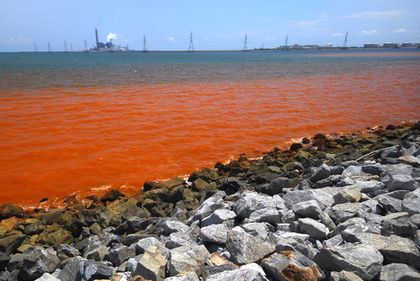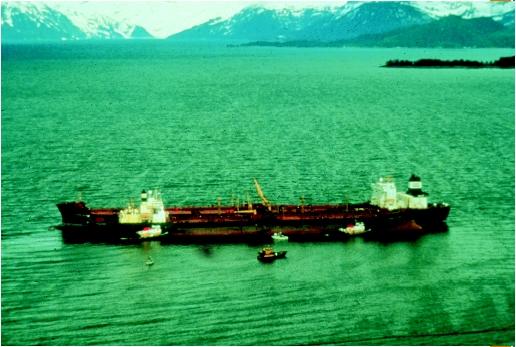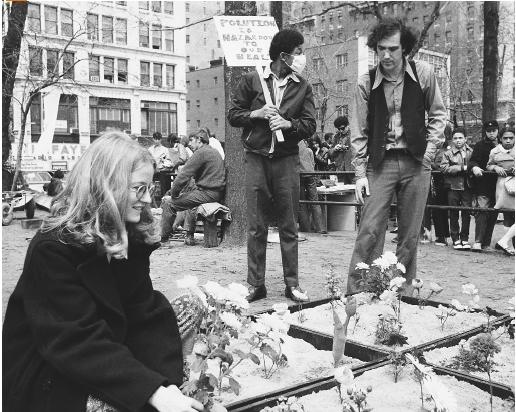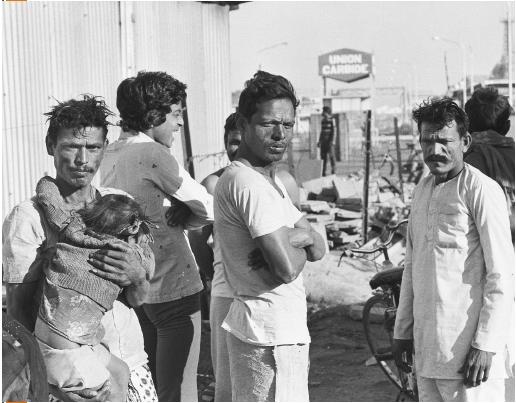History

Pollution is not a new phenomenon. In fact, it is older than most people realize. Archeologists digging through sites of Upper Paleolithic settlements (settlements of the first modern humans, between forty thousand and ten thousand years ago) routinely find piles of discarded stone tools, and the litter from the making of these tools. One could even argue that the first use of wood-burning fire ushered in the era of air pollution. Lead pollution from Roman smelters can be traced all across Europe. Yet all this early pollution was limited in its effects on the environment. As humans moved from nomadic to settled societies, however, pollution increased in magnitude, becoming a real problem for the environment and its human and nonhuman inhabitants.
Although pollution of major proportions has been a problem since the centuries preceding the Middle Ages, it is worth noting that after World War II, the type of pollution involved changed significantly. Industries began manufacturing and using synthetic materials such as plastics, polychlorinated biphenyls (PCBs), and inorganic pesticides like dichlorodiphenyl trichloroethane (DDT). These materials are not only toxic, they also accumulate in the environment—they are not biodegradable. Thus, increased rates of cancers, physical birth defects, and mental retardation, among other health problems, are now being observed. A worrisome loss of biodiversity

Water Pollution
Water is essential to life. That is why most human settlements always began near a water source. Conflicts over control of such sources started in ancient times and continue today, as evident in the Middle East, for example. Israel's National Water Carrier project was the target of attacks by neighboring Arab countries and an escalating factor in the tensions that led to the 1967 Six-Day War.
Unfortunately, the importance of clean water was not understood until the second half of the nineteenth century, a relatively recent development. In ancient Rome, sewers carried human waste into the Tiber River. By 312 B . C . E . the river was so polluted the Romans had to construct aqueducts to obtain clean drinking water. The pollution of water with raw sewage was the catalyst for many typhoid and cholera outbreaks throughout the centuries, in many parts of the world. Even today, in numerous developing nations, cholera still kills tens of thousands each year because clean drinking water is not available, or accessible, to everyone.
The connection between water pollution with human waste and the outbreaks of diseases such as cholera was not understood until the 1850s. In 1854, a devastating cholera outbreak gripped the Soho part of London, centering around the Broad Street well. A physician named John Snow, in what has become one of medicine's most celebrated sleuthing cases, deduced that the cause of the outbreak was contamination of the Broad Street well. Since no one believed him, Snow suggested taking off the well pump's handle. Once the well was not in use, the epidemic ended. The cause was later traced to washing a sick baby's dirty diapers in a cesspool that seeped into the well. Unfortunately for Soho, calls for eliminating cesspools from the vicinity of wells in that area went unheeded for quite some time.
In the United States, human waste was carried in American rivers for centuries. Not only were freshwater sources used as sewage dumps in most of the Western world (certain Asian countries used human waste as fertilizer, instead), but industrial waste was also discarded in rivers and streams. Leather tanning waste and butchering waste were frequent early polluters of water sources too. As the Industrial Revolution progressed, water pollution became a major crisis. Factories found water sources, especially rivers, a convenient means of waste disposal. The trend continued well into the twentieth century. The Cuyahoga River in Ohio caught fire several times since the 1930s, a result of oil slicks and flammable industrial waste dumped in it. Coupled with widespread and human waste contamination of rivers, a fire on the Cuyahoga in 1969, led to the enactment of the 1972 Clean Water Act (CWA). The CWA prohibits pollutants' discharge into navigable waterways, and there is no doubt it has improved water quality in the United States considerably. However, there is no realistic standard as to how clean is clean, and the act has been criticized for leading to wasted money without effective controls and monitoring systems. There is also the difficulty inherent in controlling nonpoint source pollution—pollution from diffuse or not-easilyidentifiable sources—a harder task than controlling point source pollution, which can be predicted, controlled, and monitored.
The post–World War II era saw an explosion of industries and technological advances in developed nations, ranging from engineering to medicine. Many advances that occurred during wartime proved invaluable in peacetime. Antibiotics saved millions of lives, as did pesticides such as DDT, a compound that greatly reduced the incidence of typhus during the war, and later helped control malaria worldwide. But many industrial waste byproducts found their way into the water, either through direct dumping by companies, or through leaching into groundwater from dumping sites. These by-products caused massive wildlife dieoffs, and are also blamed for elevated cancer rates, birth defects, and a lower IQ in people who subsisted on water polluted by heavy industries.
In 1962 scientist Rachel Carson wrote Silent Spring, an explosive exposé condemning the use of long-lasting pesticides in general, and DDT in particular. Her carefully researched material and its masterful presentation were the driving forces behind the emerging environmental movement in the United States and around the world. The book focused attention on the problem of pollution in the environment. It is believed that many pollution control laws, including CWA, were influenced by Silent Spring. The use of DDT in many nations was subsequently banned. Globally, DDT is currently approved only for control of insect-borne diseases such as malaria, while safer alternatives are being researched.
Air Pollution
The growth of population centers coupled with the switch from wood-burning to coal-burning fires created clouds of smoke over cities as early as the eleventh century. Air pollution regulations first appeared in England in 1273, but for the next several centuries, attempts at controlling the burning of coal met with notable failure. The problem was not confined to London, nor was it confined to England. As the Industrial Revolution swept across countries, and as coal became common in private residences, smoke and industrial pollution claimed more and more lives. In the United States, Donora, Pennsylvania, became famous for a tragedy that symbolized the dangers of industrial air pollution. On October 26, 1948, a thick, malodorous fog enveloped the small industrial town. Unlike usual fogs, it did not burn off as the day progressed. Instead, it stayed on the ground for five days. Twenty people died in Donora and 7,000 were hospitalized with respiratory problems. The cause was a weather anomaly that trapped toxic waste emissions from the town's zinc smelting plant close to the ground. The Donora disaster brought air pollution into focus in the United States, and paved the way for the Clean Air Act, enacted in 1963 and strengthened in 1970.
Between December 5 and 9, 1952, 4,000 people died in London as a result of smog trapped in a thermal inversion (a condition where the air close to the ground is colder than the layer above it, and is therefore unable to rise above it). This incident brought about England's Clean Air Act in 1956.
Smoke from coal-fired power plants creates the related problem of acid rain. Gases (sulfur dioxide and nitrogen oxides) released by burning fossil fuels make the rain more acidic and therefore corrosive. Acid rain kills plants and trees and damages structures. It also accumulates in rivers and streams, and has resulted in lakes that are already devoid of life in large parts of eastern North America and Scandinavia.
All around the world, the advent of the internal combustion engine-powered vehicles compounded air pollution, adding particulate and gaseous contaminate to the air people breath. The use of leaded gasoline raised lead levels in populations around the world. Leaded gasoline was phased out in the U.S. starting in 1976, but is still in use in many parts of the world In 1987, scientists discovered a hole in the ozone layer and recognized a serious threat to the layer that protects the earth from the sun's ultraviolet radiation. The Montréal Protocol, drafted in 1987, addressed the damage caused to the ozone layer by a chemical group known as CFCs, which were common in aerosol spray containers and air conditioners. The Montréal Protocol set as a goal the elimination of CFCs in consumer and industrial products. The global climate change accord signed in Rio de Janeiro, Brazil, in 1992 addressed the so-called "green-house gases," gases which trap heat in the atmosphere and lead to a global warming trend. The Rio Accord, and the Kyoto Protocol (1997) call for a reduction in greenhouse gases emissions but little progress has been made as the United States, a major generator of greenhouse gases, never signed the treaty and President George W. Bush has rejected the Kyoto Protocol outright.

Land Pollution
At the beginning of the twentieth century, William T. Love imagined a model community in New York, on the edge of Niagara Falls. Love dug a canal to supply water power to what he envisioned would be a combination of industrial and residential areas in his community.
Love was unable to complete his project. During the 1920s the canal he dug was turned into a landfill operated by the Hooker Chemical Company. In 1953 Hooker sold the site to the Niagara Falls Board of Education for $1, with the disclaimer ". . .that the premises above described have been filled . . . to the present grade level thereof with waste products resulting from the manufacturing of chemicals. . . ." The city built an elementary school on the site. Houses were later added. Over the years, the underground containers filled with approximately 21,000 tons of chemical waste corroded. In 1977 a record rainfall brought about a tragic consequence: The waste began to leach into people's homes, backyards, and playgrounds. Love Canal has been officially associated with high rates of birth defects, miscarriages, and other severe illness resulting from land contamination.
The tragedy of Love Canal is perhaps the most famous incident of chemical waste dumps harming people, but it is definitely not the only one. Health effects range from cancer to birth defects. The practice of chemical dumping persisted for years in the early twentieth century, in many places, without a thought to the possible risks or consequences of these actions. When Love Canal leached its deadly contents, the United States took notice. In 1980 Congress enacted the Comprehensive Environmental Response, Compensation and Liability Act (CERCLA), the first U.S. federal law to address toxic waste dumps. CERCLA, also known as Superfund, is the emergency fund to clean toxic waste dumps when the owners of the dumps are unknown or unable to pay for a necessary cleanup. While Superfund is helping clean up many hazardous sites, litigation over liability led to delay and costly legal battles over who pays for cleanups. Another criticism is that Superfund lacks clear standards as to what constitutes a "clean" site.
Across the globe, developing countries have been buying hazardous waste from developed nations, where disposal is more expensive. Historically, there has been little or no regulation of hazardous waste disposal in developing nations; as the world becomes more of a global community, however, this problem will no doubt haunt future generations.
Chemical Pollution
In 1984, 30 tons of lethal methyl isocyanate gas were released into the air in Bhopal, India, from a Union Carbide plant. Thousands of people (estimates range from 2,500 to well over 8,000) died immediately. Deaths and disabilities continued to plague the populace for years following what was termed, at the time, "the worst industrial accident in history." A year later, in Institute, West Virginia, another Union Carbide plant released toxic gas into the atmosphere, resulting in illnesses among town residents. Deeply concerned about the possibility of a Bhopal-like disaster in the United States, Congress acted swiftly to enact the Emergency Planning and Community Right-to-Know Act (EPCRA). The law requires companies that handle hazardous waste to furnish complete disclosure of their annual polluting activities, storage and handling facilities, any accidental release of hazardous material into the environment in a quantity above an established safe limit, and all material necessary for local authorities to respond to an accident involving the hazardous material(s) on site. Since the law was enacted, a substantial reduction in toxic releases was reported by companies who are required to participate in EPCRA disclosures.
Oil pollutes land and water sources, the most tragic example of which is the Exxon Valdez. While not one of the largest spills in the world, it is considered the worst in terms of the damage to the environment. On the night of March 24, 1989, the oil tanker ran aground at Bligh Reef, Alaska, spilling eleven million gallons of oil into the fragile environment of Prince William Sound. A lack of containment and cleanup equipment compounded the problem, and even fifteen years after the spill the Prince William Sound environment was still struggling to recover from the massive damage.
One response to the Valdez disaster was the passage of the 1990 Oil Pollution Act, which, among other things, required oil tankers to be double-hulled, and gave states more say in their spill-prevention standards. The spill-response equipment and safeguards procedures at Prince William

Nuclear power is one of the most controversial issues of our time. For many people, the benefits it brings are dwarfed by the immense dangers inherent in the nature of its fuel. Release of radioactivity into the air and the atmosphere occurred over the years, but accidents like Chernobyl and Three Mile Island terrify people, and with good reason.
On March 28, 1979, a partial meltdown of the reactor in Three Mile Island, Pennsylvania, released radioactivity into the atmosphere. The release itself was small, according to authorities. But inside the containment building a hydrogen bubble was growing, threatening to blow the building and spew radioactivity into an area inhabited by some 300,000 people. The effects such an explosion would have had on the population were only theorized until 1986, when the nuclear reactor in Chernobyl, Ukraine, did explode. Though the immediate loss of life was small according to official figures, within several months the death toll was growing. Cancer rates, especially in children, have soared in the Ukraine and Belarus. And while the blown reactor is buried in concrete, evidence show the cover is deteriorating.
The Three Mile Island accident led to the establishment of the Institute of Nuclear Power Operations (INPO). INPO is tasked with promoting safety in commercial nuclear plants in the United States, and cooperates with similar international organizations.
While safety regulations and oversight bodies were upgraded and tightened as a result of the two accidents above, nuclear waste, both civilian and military, presents a huge problem of disposal. The decay of some nuclear waste can take thousands of years. Disposal of the short-lived waste is easy compared to finding a place that can safely store highly radioactive materials for thousands of years. Moreover, many communities oppose the transportation and/or burial of such waste in their area.
Environmental pollution is not new, but its scope, type, and complexity have worsened since World War II. The good news is that nations across the globe now have an awareness of the consequences of pollution, and the dangers they pose to our very existence. Both governments and nongovernmental organizations are working on the many facets of pollution. Among the answers they seek are alternative, nonpolluting energy sources, a way to control harmful emissions and toxic discharges into the air and water, and methods for cleaning up damaged ecosystems and bringing species back from the brink of extinction. Coincident with this work is the growing understanding that a safe and protected environment must begin with social healing, that both poverty and affluence perpetuate environmental degradation. Poor societies must concentrate on immediate survival before they can spare the time or energy to worry about environmental health. Rich societies must understand that their comfortable lifestyle comes at the high price of increased pollution—from sources such as factories, car engines, and power plants. The challenges that face the global community as it tries to combat an ecological crisis involve creating social conditions that allow all members of the community to be equally committed to, and equally capable of, healing the place we all call home.
SEE ALSO C ARSON , R ACHEL ; C LEAN A IR A CT ; C LEAN W ATER A CT ; D ISASTERS : C HEMICAL A CCIDENTS AND S PILLS ; D ISASTERS : N UCLEAR A CCIDENTS ; D ISASTERS : O IL S PILLS ; D ONORA , P ENNSYLVANIA ; E MERGENCY P LANNING AND C OMMUNITY R IGHT -to-K NOW ; E NVIRONMENTAL M OVEMENT ; L AWS AND R EGULATIONS , I NTERNATIONAL ; L AWS AND R EGULATIONS , U NITED S TATES ; M ASS M EDIA ; S UPERFUND .
Bibliography
Asimov, Isaac, and Pohl, Fredrick. (1991). Our Angry Earth. New York: Tor.
Leinwand, Gerald. (1990). The Environment: American Issues. New York: Facts on File.
Markham, Adam. (1994). A Brief History of Pollution. New York: St. Martin's Press.
Nebel, Bernard J., and Wright, Richard T. (2000). Environmental Science: The Way the World Works. Upper Saddle River, NJ: Prentice Hall.
Ponting, Clive. (1992). A Green History of the World. New York: St. Martin's Press.
Internet Resources
"The Environmental History Timeline." Available from http://www.runet.edu/~wkovarik .
Online Ethics Center for Engineering and Science at Case Western Reserve University. "Rachel Carson: A Scientist Alerts the Public to the Hazards of Pesticides." Available from http://www.onlineethics.org/moral .
Adi R. Ferrara